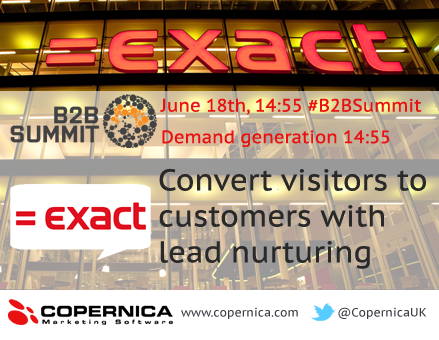Five ways to reinforce your ecommerce activities with email marketing
Website owners hate abandoned shopping carts, inactive customers and decreasing conversion rates, but all too often opportunities are left unexploited to reduce these by delivering personalised, targeted event driven email marketing.
Email marketing also provides opportunities to build relationships, trust and boost customer loyalty which will also positively affect the bottom line.
In the following article, I’ll look into five key points that can help you to generate more revenue and take your ecommerce activities to a higher level using email marketing.
1. Increase conversion with segmentation
How can you get more conversions by using email marketing? By considering email marketing as more than just sending a weekly newsletter to your entire database.
Web shops generally possess a lot of customer information, and this data can be used easily and wisely by using event driven email as part of your email marketing strategy. Event driven emails are prepared using a set of triggers, allowing you to set up and fine tune your communication and response optimally based on the behaviour of your customers.
So consider using event driven emails such as:
- Birthday mailings.
- Retention mailings.
- Abandoned shopping cart mailings.
- Mailings to improve customer satisfaction.
- Mailings to reward loyal customers with incentives
.These automated emails can also be personalised to include name and address and a host of customer specific information that ensures that your communication is as personal and relevant as possible leading to an increased conversion.
2. Deploy customers for better product information management (PIM)
Use email marketing to ask your customers to write reviews. Next to valuable customer insights this will also provide you with insights on the performance of your web shop.
Reward these customers with an incentive after they have written a review. For example, you can invite them to write a review, three weeks after they’ve made a purchase. When there is no response from the customer, think about sending a reminder and mentioning the incentive again.
The information given by the customer can be used perfectly to optimize the product information in your web shop. Enrich your products in the front-end with information such as: “This product already has 13 positive reviews. Read them here”. And similarly you can enrich your products in the back-end: “product X relates optimally combined with product A”. This last piece of information can be used when setting up cross- and up sell campaigns.
An additional advantage of these reviews is that they contribute to your position as a web shop in search engines because of the relevant and unique content your customers add to your web shop. This user generated content makes it more attractive for your potential customers to make a purchase in your web shop.
3. Use email marketing to support your order management
One of the key success factors of your web shop is the amount of service orientation towards your customers. Email marketing is still used too little to answer service questions such as Where Is My Order? (WISMO). This part of order management can be followed up effectively using email marketing.
To prevent high distribution costs (for example extra costs because the customer couldn’t answer the door) and to increase the service level of your web shop, you have to decrease your WISMO-questions. The most important advice in this matter is to keep communicating with your customers.
You can keep your customer up-to-date on the status of their order by combining email marketing with a good landing page enabling your customer to track his order status and pro-active emails mentioning changes on that page.
This tackles possible questions such as ‘when can I expect my order’ and you facilitate customers in freeing up their schedule, making sure they’re at home when the order is delivered.
4. Reactivate inactive customers via email
Almost every web shop has customers who haven’t been active in the web shop for a long time or who don’t open the newsletter any more. This group is inactive and useless for your site.
This is a missed opportunity! Think about sending a reactivation mail to customers who haven’t opened your newsletter the past 10 times you sent it. Or to those who haven’t purchased anything during the past six months.
By approaching these customers with a win back campaign, you can reactivate them and help boost your conversion and the traffic to your web shop.
But what to do with those who don’t respond to your reactivation request? You’ve got two possibilities:
- Remove them from your mailing list and database. This does imply that you lose the customers’ data permanently.
- Put these customers in a separate segment within your database. This helps you create a clear distinction between your active and inactive.customers
Both steps make sure you maintain a clear and active group of recipients, increasing the quality of your database.
5. Reward your loyal customers
Giving something back to your best customers, can keep them coming back. Think about the 80-20 rule, the top 20% of your database can account for a large part of the revenue, these are certainly relationships you want to protect and one of the ways to do this is through an automated reward programme.
Decide how much your best customers are spending on average and how often they purchase, and set up an automated email response to be sent to customers who trigger the discount/reward threshold.
Next you need to decide what kind of rewards you are going to offer customers, will it be a discount with every purchase, a points programme that lets customers cash in their loyalty for goods and prizes, free shipping. Avoid limiting your rewards to just discounts, as these don’t have a lasting impact on customer’s memories, particularly if your customer is a B2B purchaser and may not be benefitting directly from money off the order.
This article has already been posted on Econsultancy.
















